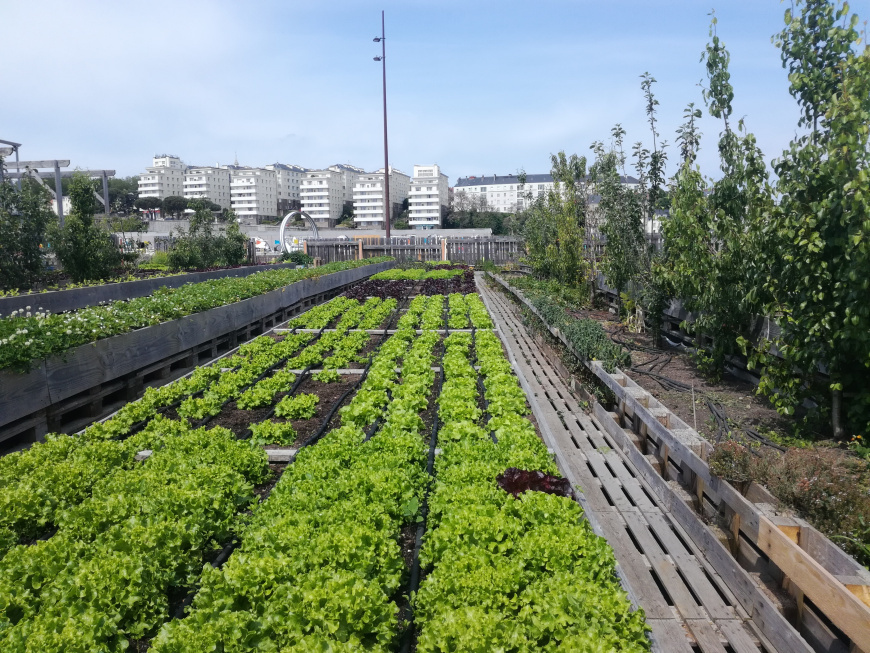A Biased View of City Blooming
A Biased View of City Blooming
Blog Article
Some Of City Blooming
Table of ContentsAbout City BloomingThe Main Principles Of City Blooming Rumored Buzz on City BloomingRumored Buzz on City BloomingSee This Report on City Blooming
Intrigued in expanding food up for sale in the City of Chicago? Assuming about beginning a community garden? Modifications to the Chicago Zoning Statute permit agricultural uses like neighborhood gardens and metropolitan farms in numerous components of the city. Below is a checklist of often asked concerns relating to the guidelines and guidelines that farmers should think about when intending a metropolitan farming task.
The zoning modification does not customize any kind of various other codes handling composting, building licenses, acquiring or renting City had residential property, organization licenses or ecological contamination. There are existing codes that control these concerns and they stay completely impact and may be suitable to your project. Area gardens are commonly had or managed by public entities, civic organizations or community-based organizations and kept by volunteers.
Urban ranches grow food that is meant to be sold, either on a nonprofit or for-profit basis. Due to their industrial function, city farms need a service certificate. Yes. An area yard is permitted to sell excess produce that was expanded on site if the sales are accessory or subordinate to the yard's primary objective explained above.
The Definitive Guide for City Blooming
The amount of compost product can not exceed 25 cubic backyards at any kind of provided time according to the requirements in 7-28-715 of the City's Municipal Code. Due to the fact that the dirt at many new garden sites needs changing, garden compost, soil, wood chips, or other products can be gotten to construct or boost the growing space.

If a building authorization is called for after that the hoophouse will certainly be thought about an accessory structure. You can locate out more concerning the structure license demands by calling the Division of Structures. The 25,000-square-foot dimension restriction is intended to protect against a solitary area yard from controling an offered block or interfering with the block's existing household or industrial personality.
The restriction does not use to yards located in Public Open Space (POS) districts. Can there be even more than one area yard that is 25,000 square feet on a single block? Fence is not required, however, gardens that have huge car park locations might be needed to mount fencing or other landscape design features.
Not known Factual Statements About City Blooming
B1 & B2 districts require that all industrial use activities be conducted inside. R areas restrict industrial task. The guidelines show the function and intent of the Zoning Code. Is fence needed for metropolitan ranches? Yes. Fencings may be required, in addition to landscaping and screening, for specific parking lot and outdoor job or storage space areas depending on area and the certain task happening.
Yes. Urban farms need structure permits and zoning authorizations before building and construction. Various other kinds of city review may be needed depending upon details structures, tasks, dimension, landscape design, licensing, public heath and stormwater administration issues. Numerous of these demands are identified in the project layout or allowing process, nonetheless, the candidate might be liable to individually recognize specific licenses or permits that may be required.
Yes. The kind of license is established by what is occurring at the site. The Division of Service Matters and Customer Security can aid determine the certain type of service permit that's called for. Yes. Off street vehicle parking is required for a lot of business projects in Chicago. The called for variety of vehicle parking spaces is based on the variety of staff members dealing with site and not the square footage of the growing area.
Examine This Report about City Blooming

A city farm can offer compost material created on site, nonetheless, the operation needs to comply with the guidelines in 7-28-715 of the Chicago Municipal Code. Aquaponic systems are allowed indoors on city ranches in several zoning areas.
As much as 5 hives or colonies of honey might be kept as an accessory usage. Beekeepers have to register with the Illinois Division of Farming. For more details regarding the recommended zoning amendment you might speak to the Department of Housing and Economic Development, Bureau of Preparation and Zoning at 312.744.8563.
Farming in cities and city locations An urban farm in Chicago. Urban agriculture refers to different methods of growing. https://www.merchantcircle.com/blogs/city-blooming-san-francisco-ca/2024/6/City-Gardening-Growing-Urban-Spaces/2755418, handling, and distributing food in urban locations. The navigate to these guys term also relates to the area tasks of animal husbandry, aquaculture, beekeeping, and gardening in an urban context. Urban agriculture is identified from peri-urban farming, which occurs in backwoods at the edge of suburban areas.
Some Of City Blooming
It can involve a movement of natural cultivators, "foodies" and "locavores", who seek to create socials media founded on a common values of nature and neighborhood holism. These networks can create by means of formal institutional support, coming to be incorporated right into neighborhood town as a "change town" motion for sustainable city advancement.
The a lot more straight accessibility to fresh veggie, fruit, and meat items that might be understood with urban agriculture can enhance food protection and food safety and security while lowering food miles, bring about lower greenhouse gas exhausts, consequently adding to climate change mitigation. Some of the very first evidence of urban agriculture originates from Mesopotamia.
Report this page